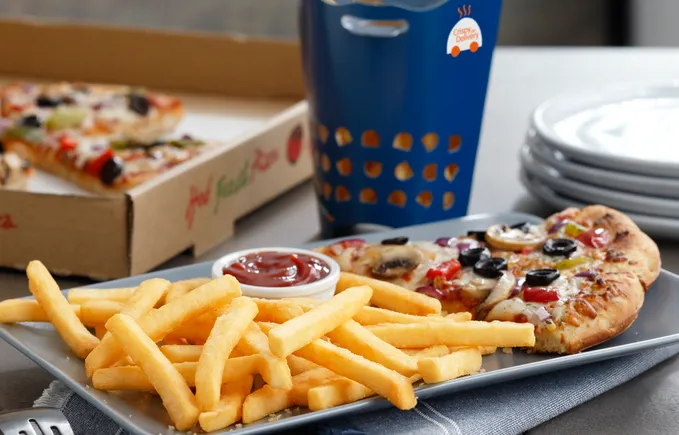Lamb Weston plans to close its Connell facility, cut 428 jobs, and restructure its operations to address soft demand and increase cost efficiency. Discover more here.
Introduction: Lamb Weston Announces Major Restructuring Efforts
Lamb Weston, a leading supplier of frozen potato products to restaurants and retailers, has announced the closure of its older, higher-cost processing facility in Connell, Washington. In addition, the company plans to temporarily curtail certain production lines and schedules across its North American network. The restructuring will result in the elimination of 4% of its workforce, or approximately 428 jobs, as well as the removal of unfilled positions. This move is aimed at addressing the current supply-demand imbalance and improving operational efficiency as consumer demand remains weak.
The Impact of Soft Demand on Food Producers
The decision to close the Connell facility and reduce its workforce comes amid ongoing economic challenges, with soft demand for food products weighing heavily on producers. According to Tom Werner, CEO of Lamb Weston, the demand for the company’s frozen potato products is expected to remain soft through the remainder of fiscal 2025.
With consumers eating out less frequently and tightening their spending due to economic uncertainties, companies like Lamb Weston are under pressure to maintain profitability and manage costs. The economic landscape has prompted food producers across the industry to take decisive actions to align output with reduced demand.
Strategic Restructuring: A Focus on Cost Efficiency
Lamb Weston’s restructuring plan is designed to drive operational efficiency, reduce costs, and improve cash flow. The closure of the Connell facility and the reduction of jobs will help the company manage its factory utilization rates more effectively, while also addressing the supply-demand imbalance in North America.
The restructuring is expected to generate approximately $55 million in pre-tax cost savings and a reduction in working capital over fiscal 2025. According to Werner, these actions will better position the company to navigate the current economic environment and maintain competitiveness.
“We expect these actions will help us better manage our factory utilization rates and ease some of the current supply-demand imbalance in North America,” Werner said.
Industry-Wide Adjustments: A Common Response to Economic Pressure
Lamb Weston is not the only food company making adjustments to its production network in response to slow consumer demand. Several other major food manufacturers have recently announced closures and workforce reductions in an effort to cut costs and boost operational efficiency.
In July, Wonder maker Flowers Foods announced plans to close a bun-making plant in Louisiana. Similarly, Bimbo Bakeries USA, which oversees popular brands such as Entenmann’s and Sara Lee, is shuttering two facilities in New York and another in Texas. The Dr Pepper brand has also announced closures in Virginia and Vermont, while increasing investments in its South Carolina coffee roasting and manufacturing facility.
Even major players like Campbell Soup have been impacted. In May, the company announced the closure of one facility and the downsizing of another. At the same time, Campbell Soup committed to investing $230 million through fiscal 2026 to build newer, more efficient plants aimed at improving the competitiveness of its supply chain.
Driving Growth Through Operational Efficiency
As food producers face continued economic pressures, many are shifting their focus toward improving factory utilization rates and cutting operational costs. By optimizing production processes and eliminating underperforming facilities, companies aim to boost their profit margins while managing slower demand for consumer goods.
Lamb Weston’s restructuring efforts align with this industry trend, positioning the company to weather the economic storm and prepare for future growth. The closure of the Connell facility, along with the reduction of its workforce, is part of a broader strategy to ensure that the company can respond more effectively to changes in demand while maintaining operational efficiency.
Looking Ahead: What’s Next for Lamb Weston?
With the decision to close its Connell facility and streamline operations across North America, Lamb Weston is taking proactive steps to adapt to the changing market landscape. The company’s focus on cost efficiency and supply-demand alignment will allow it to remain competitive in the frozen potato product industry despite the challenges posed by softer demand.
Looking ahead, Lamb Weston will continue to monitor market conditions closely while seeking out opportunities to enhance its production capabilities. The company’s efforts to improve its supply chain efficiency are expected to yield long-term benefits, even as the near-term outlook remains uncertain.
Conclusion: Navigating Economic Challenges with Strategic Restructuring
Lamb Weston’s decision to close its Connell, Washington facility and reduce its workforce is a strategic move aimed at improving operational efficiency in response to a challenging economic environment. As consumer demand for food products remains soft, the company is aligning its production capabilities with market realities, generating significant cost savings and positioning itself for future growth.
This restructuring effort mirrors actions taken by other food producers, such as Flowers Foods, Bimbo Bakeries USA, and Dr Pepper, as companies across the sector look to increase profitability and better manage their operations in an uncertain economy. By focusing on driving cost efficiency, Lamb Weston is preparing to navigate the current landscape and ensure long-term success in the competitive food industry.
